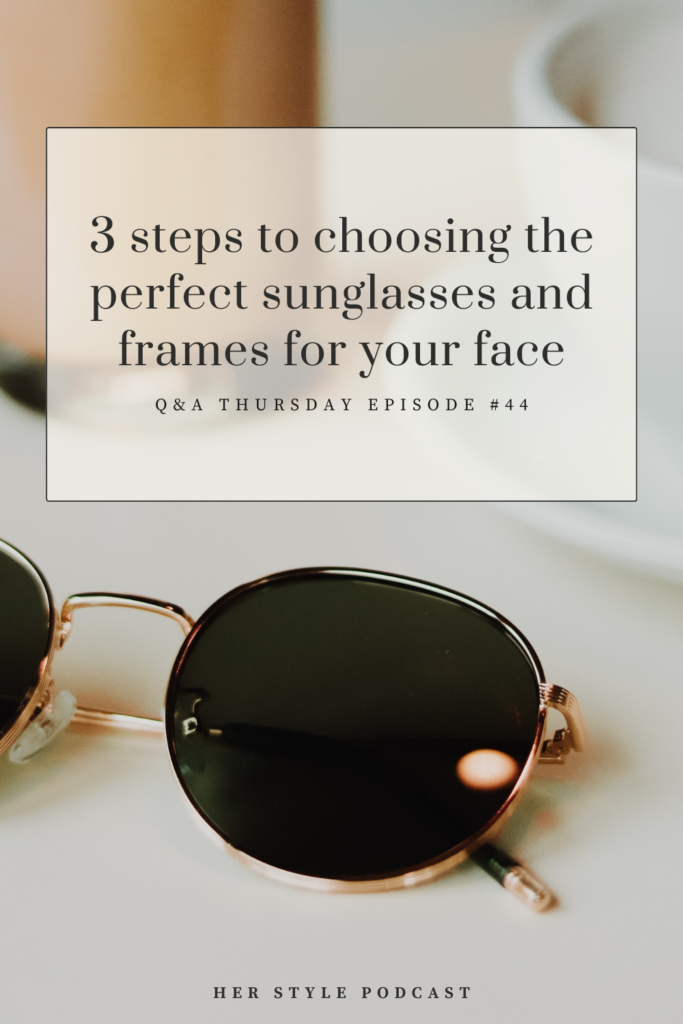
APPLE PODCASTS | SPOTIFY | STITCHER
Confession time: I have a thing for glasses. 👓 🖤
I can’t put my finger on what it is exactly, but I love the look of them! They add an undeniable heir of sophistication and intelligence to an outfit. People tell me I wouldn’t feel that way if I had to wear them myself, but I honestly don’t think my opinion would change one bit. In college, I picked up a cheap pair at New York & Co. once, assuming they were sans-prescription, until I found myself with a terrible headache and blurry vision half way through the day. Lesson learned.
Despite that minor setback, I’m an absolute sucker for a great pair. And when I do finally need them, I’ll know just how to pick the perfect pair. Want to know the 3 secrets to finding the right frames for your face, too?
There are 3 simple steps to follow when choosing your best glasses: frame design, skin color consistency, and face shape. Allow me to break this down one step at a time…
Step 1: Frame Design
Think the secret to finding the perfect pair of glasses is knowing your face shape? Think again! (Although, we will get to that shortly. 😉)
The overall frame design is actually the most essential component to consider when looking for lenses. This is especially true when shopping for transparent eyewear, like your everyday reading glasses. The personal features you need to examine in order to determine your ideal frame design are your pupil placement, ear extension, jaw structure, head length and nose width.
1. Pupil Placement — Use this to determine the top of your frames. If your eyes are small or close to the top of the frame, you may want to choose a style that gradually angles up and away (think a very subtle cat-eye). This will help to visually expand the eye area.
2. Ear Extension — If your ears lay flat against your head, this means that your head is wide in the ear area. You can minimize this width by keeping the top side of the frame to the cheekbone thin and close to your head. Apply an alternative technique to create the reverse effect.
3. Jaw Structure — This feature can give clues to the most flattering shape along the bottom side of the frame. Follow the angle of your bone structure from cheekbone to jawline.
4. Head Length — Examine the length of the bottom half of your face to decide the perfect shape for the bottom of your frames. To shorten the length of your face, choose a flat edge. Choose a more rounded bottom line to lengthen your face.
5. Nose Width — The width of your nose can determine two features of your glasses, the inside of the frame and the bridge. Your nose is balanced in width if the nostril area is only slightly wider than the bridge. To maintain this balance, you want to keep the inside of the frame close to your nose. To widen the appearance of your nose, opt for frames that rest slightly away from the sides of your nose and allow the bridge to rest a bit lower. Alternatively, try on glasses that sit a bit higher on your nose and close at the sides in order to narrow the space.
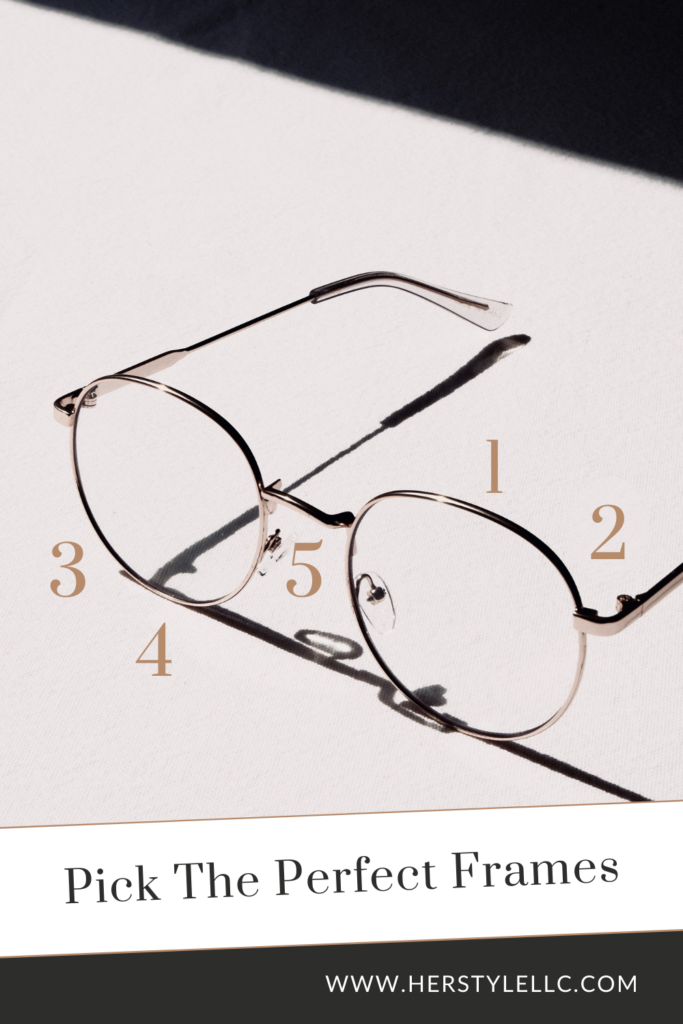
Step 2: Skin Color Consistency
Another important, and arguably more fun!, trait to choose in your glasses or sunnies is the frame color or colors. There are so many unique patterns and prints on the shelves, but it’s essential to choose a pair that flatters your personal coloring. Some designs can be overwhelming, so unless you have a dramatic or creative signature style, make sure that they don’t overpower your face. After all, you want people to see you first and your glasses as a secondary accessory.
While I’m a sucker for a good, eye-catching print, something ultra unique and bold might be the first to get old and/or clash with other pieces in your wardrobe. Be sure to think long term and choose a pair you’ll love for a while. Glasses can be a big investment, so you want to make sure your selection will easily coordinate with the items already lingering in your closet and be adaptable to the various occasions on your calendar.
The easiest way to discover your best colors is through my Personal Color Palette service where I eliminate all the guesswork and hand over your 35 most flattering hues based on your unique personal coloring, personality, and preferences. This resource is an absolute game changer when it comes to building a wardrobe (and accessories collection) you LOVE.
Step 3: Face Shape
While this final step is the most talked about, using your face shape to pick your perfect glasses is truly the LEAST important factor. It can be helpful to consider, especially if you have a more unique shape or a strong desire to alter the appearance of your face with the help of your frames. You also might find this information more helpful when shopping for opaque sunglasses that flatter you.
That said, it can be tricky to determine your own face shape. So I’m going to walk you through them one at a time. If you need some extra assistance, seek the second opinion of a friend or family member. It’s essential to check your face shape with your hair slicked back by either a headband or tying it into a tight ponytail. If you have a straight-forward, head shot-style photograph of your face (with your hair pulled back), even better. Print out a copy and outline the overall shape of your face with a marker. Use the celebrity examples below as a guide to find the perfect photo.
Now, let’s get to it!
Oval
An oval face shape is considered to be the most balanced and versatile. This shape is proportional in length and width (about 1.5 times longer than it is wide), will have a curvilinear shape like an egg, and a chin that is very slightly narrower than the forehead. If this resonates with you, maintain and emphasize the perfect balance of your face by choosing glasses that are also symmetrical from top to bottom and in width and that have a soft curve.
Familiar females with this face shape include Halle Berry and Jessica Alba:
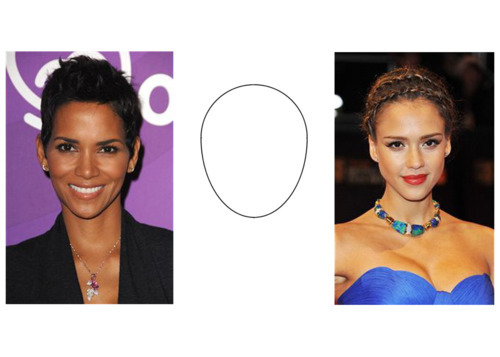
Sample sunglasses for an oval-shaped face:
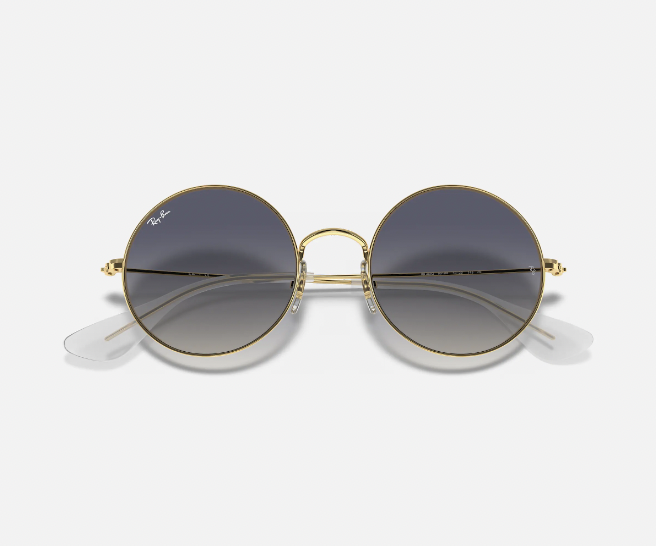
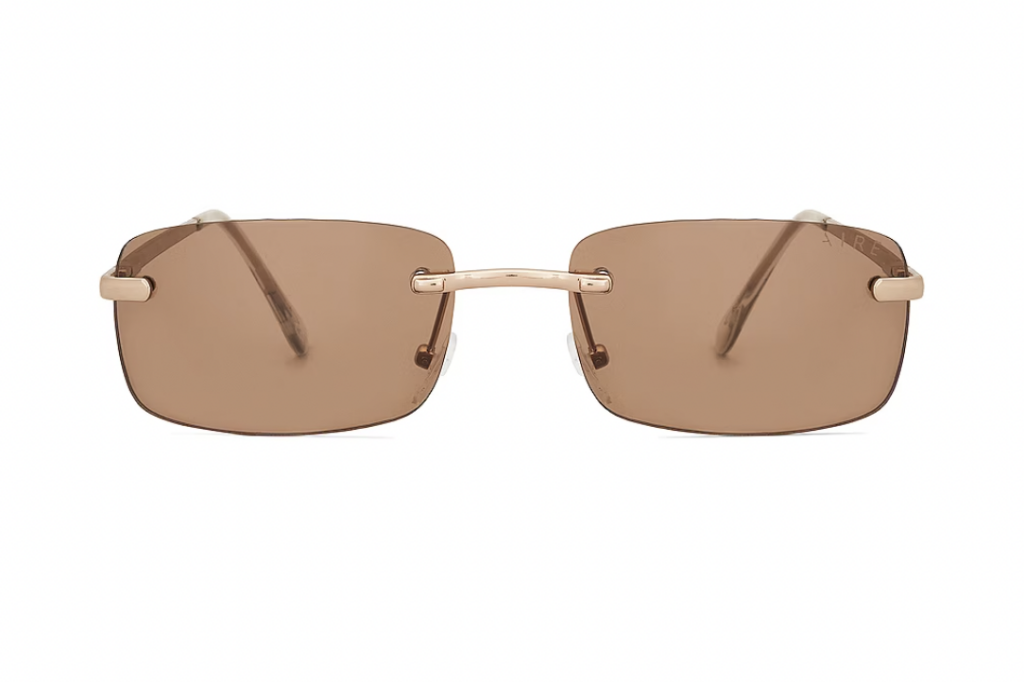
Oblong
The oblong shape is an exaggerated form of the oval, because it is much longer and narrower. People with an oblong shape generally have a vertically straight cheek line. You may want to optically shorten the length of your face by trying glasses that have a flat bottom edge. You can also add width to better balance your facial proportions by opting for glasses with a slight cat-eye shape and/or frames that are thicker on the outer edges.
Fellow oblong face owners include Sandra Oh and Sarah Jessica Parker:
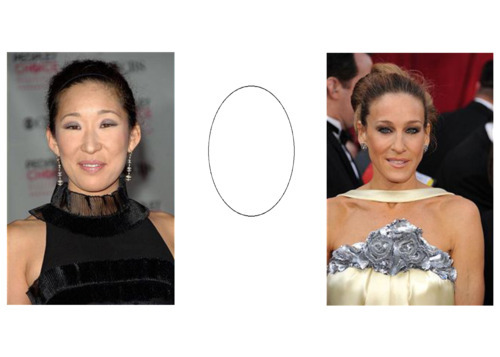
Sample sunglasses for an oblong-shaped face:
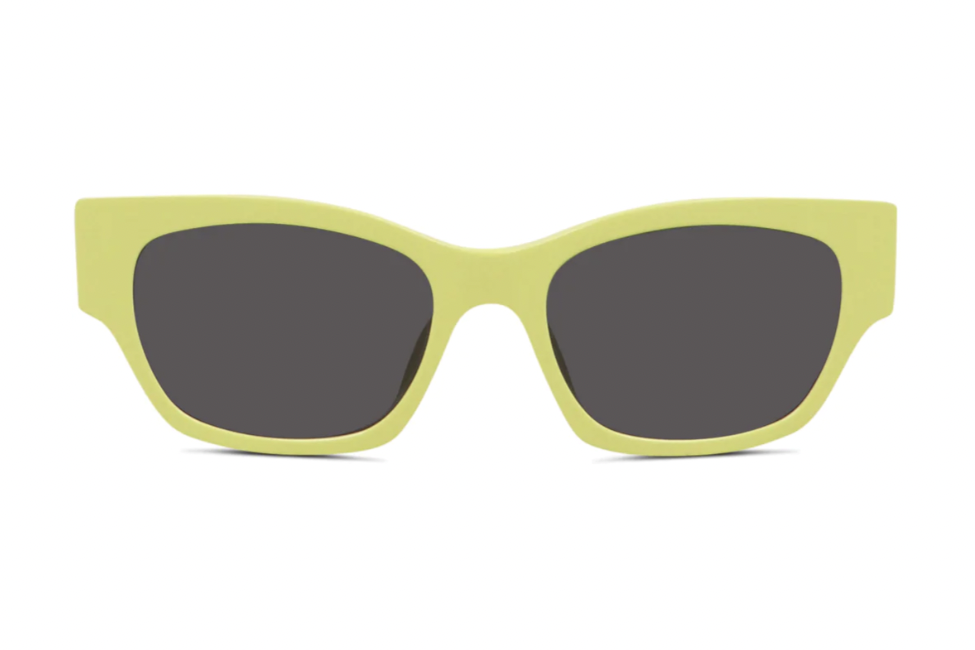
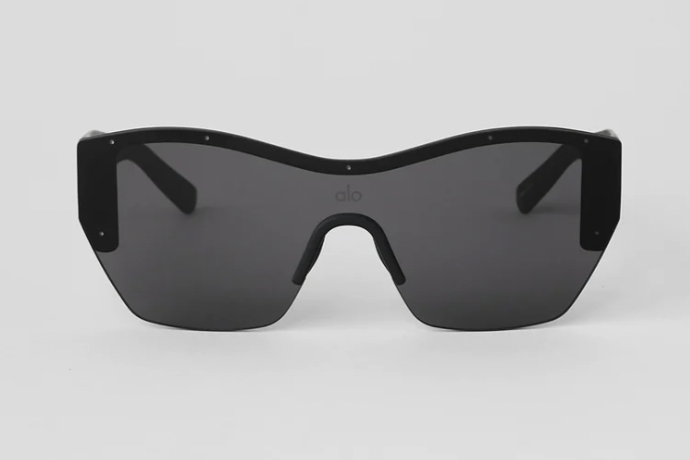
Round
A round face is circular and about as wide as it is long. Although it’s a common myth that sharp, angular frames will work to counter the wide, circular aspect of your face shape, this will actually draw more attention to the stark contrast between the two. It’s better to compliment your features by opting for glasses that are rectangular, but with curved edges that relate to the curvature of your face.
Celebrities that share your shape are Cameron Diaz and Ginnifer Goodwin:

Sample sunglasses for a round-shaped face:
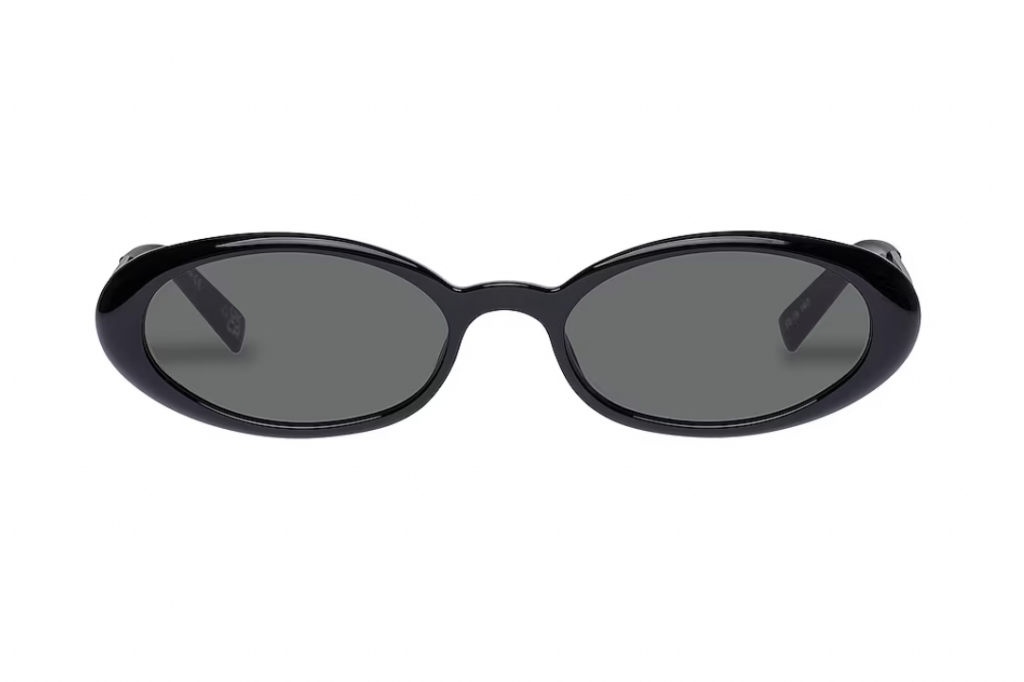

Heart
If you’re a heart-shaped face, then we share this trait, and we’re not alone. It’s the most common shape and is defined by a broad forehead (this will be the widest part of your face), wide cheekbones, and a relatively narrow chin. Balance the width in the top half of your face by choosing frames that follow the line of your cheekbone along the bottom edge. Keep the top of your frames thin and simple. This will help to add interest to the lower half of your face.
Reese Witherspoon and Kate Beckinsale are two of our fellow hearts:

Sample sunglasses for a heart-shaped face:
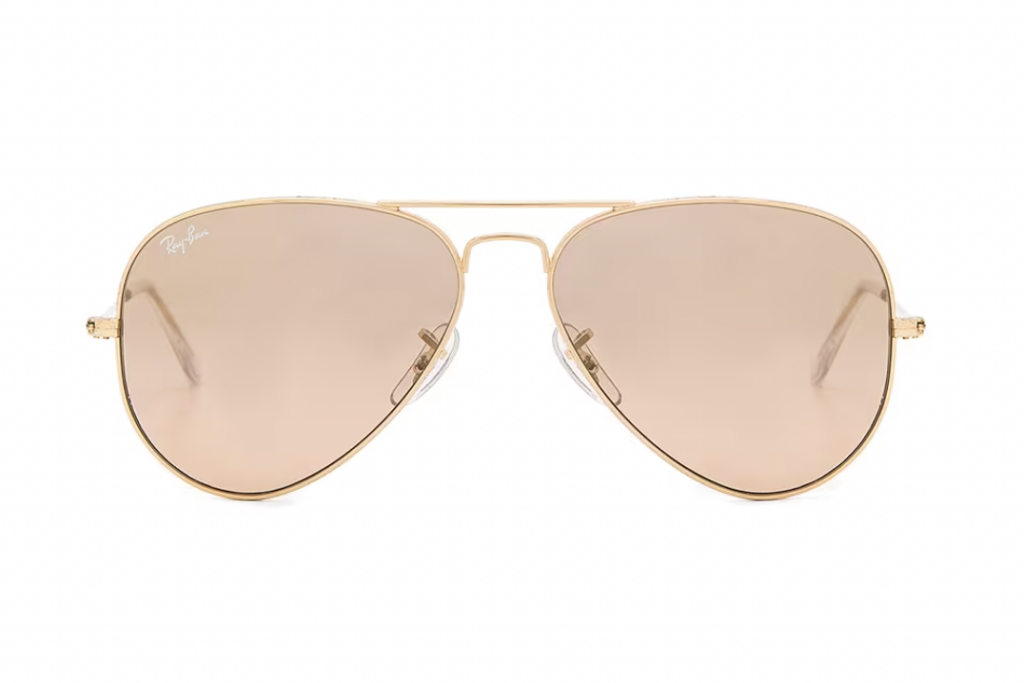
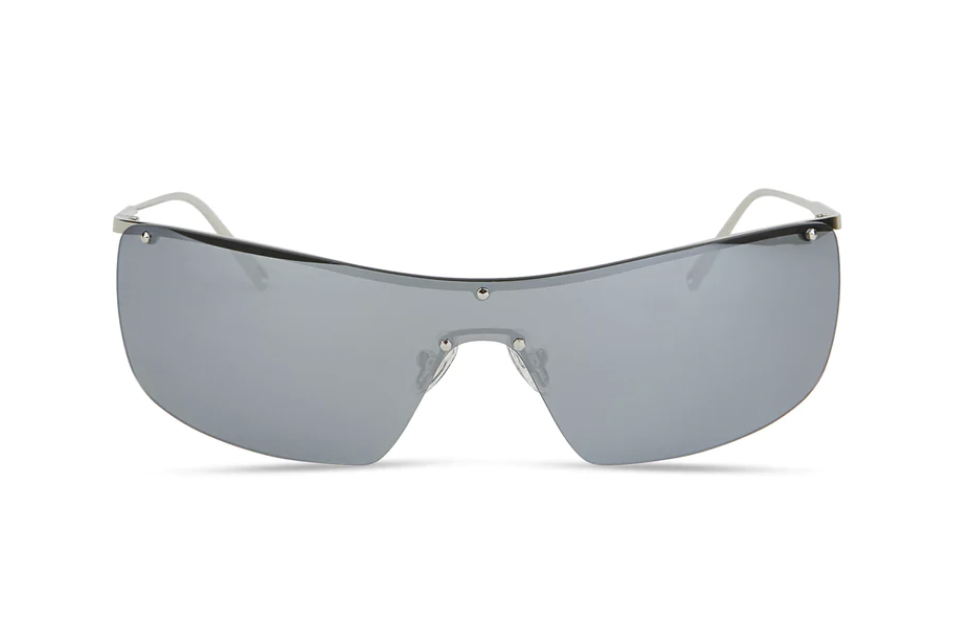
Triangle
This shape is opposite of the heart, because triangle faces carry their width in the jawline. This face shape has a narrow forehead that gradually widens from the cheekbone to chin. To add width to the top half of your face, choose frames that are thicker and farther away from your face at the upper edge.
Celebs with this shape include Minnie Driver and Renee Zellweger:
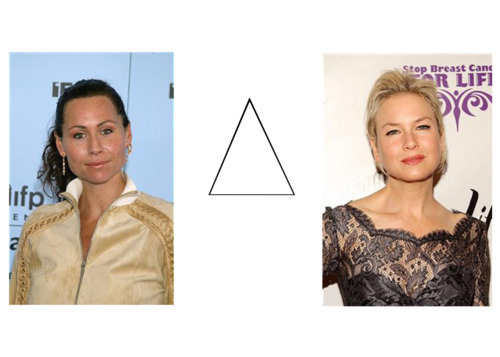
Sample sunglasses for a triangle-shaped face:
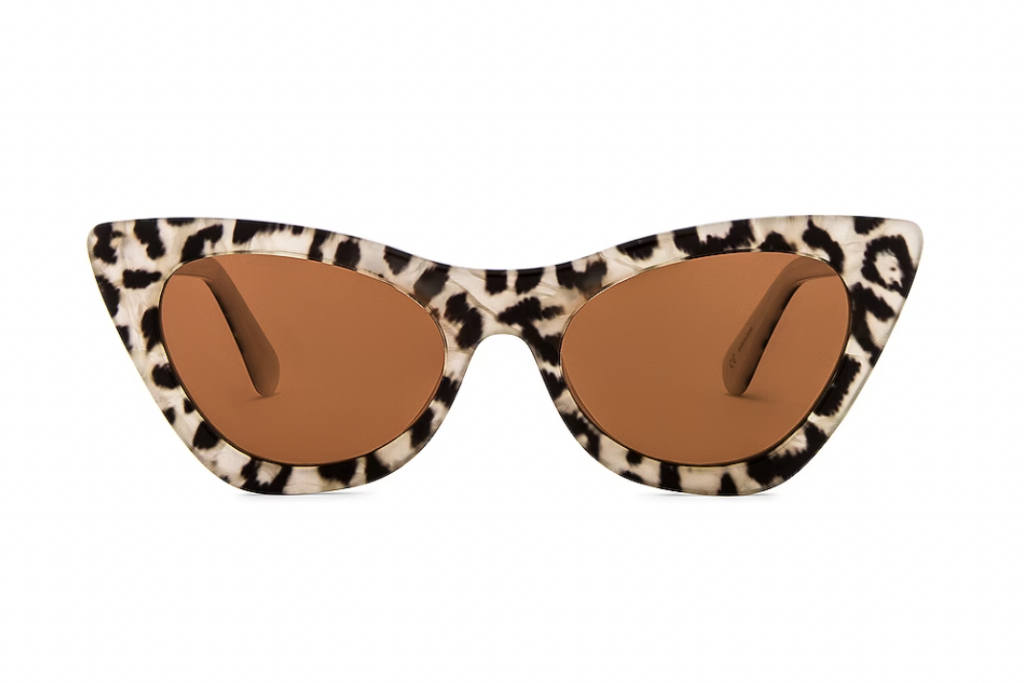
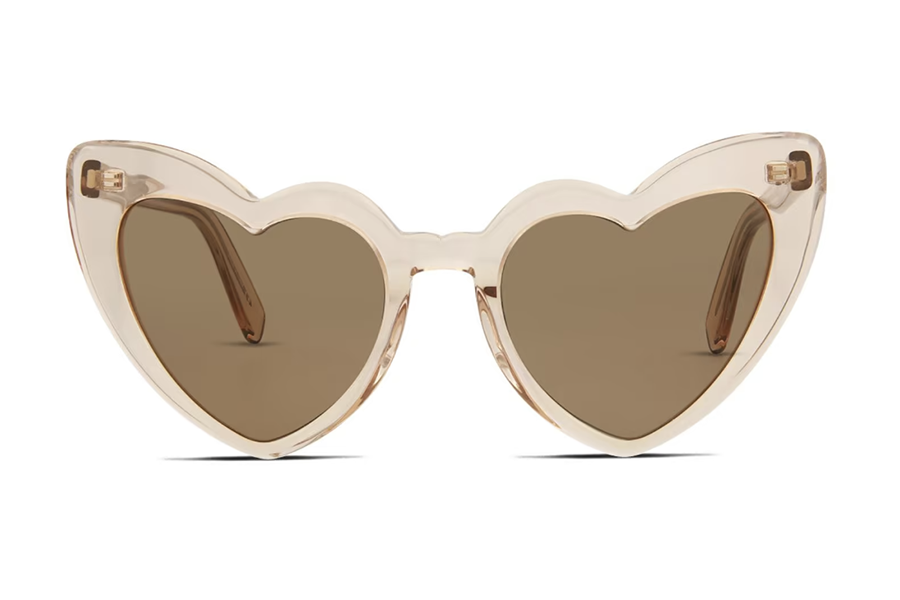
Inverted Triangle
This is opposite of the triangle shape above and is also a more exaggerated version of the heart shape. The distinguishing difference between this shape and the heart is that the inverted triangle is widest at the forehead, but narrows at the cheekbone rather than at the chin. To balance and widen the lower half of your face, purchase glasses that are thin and close to your face at the outer corners. Also, follow the tip I provided for heart-shapes by following the shape of your jawline along the bottom rim, in order to draw visual interest to this area.
Iman and Victoria Beckham are among the beautiful inverted triangle faces out there:
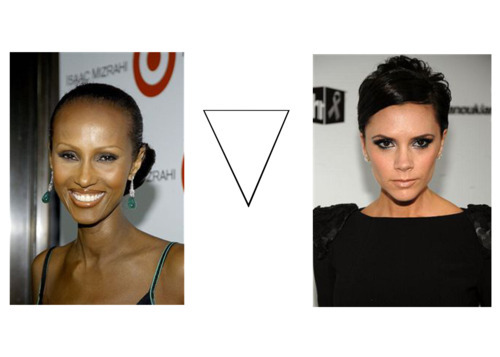
Sample sunglasses for an inverted triangle-shaped face:
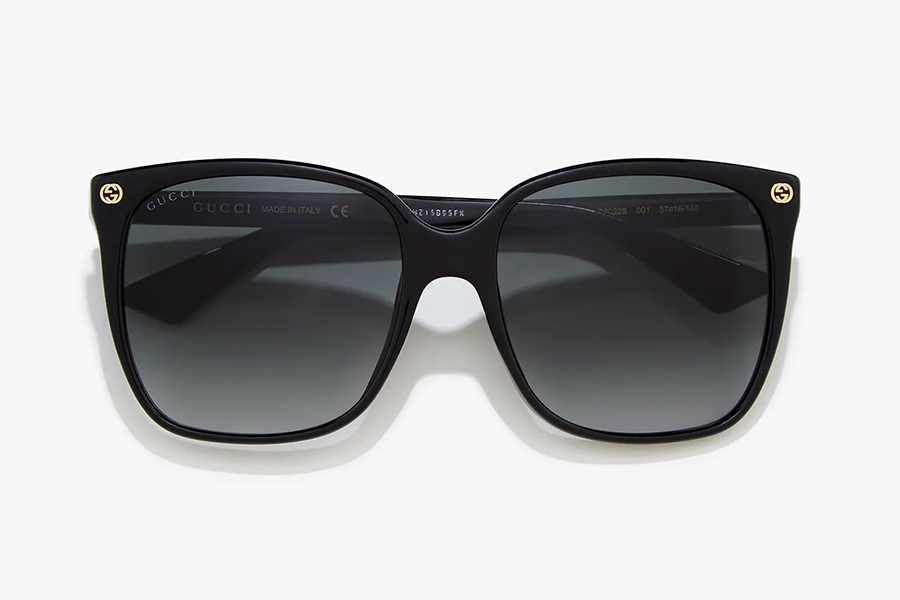
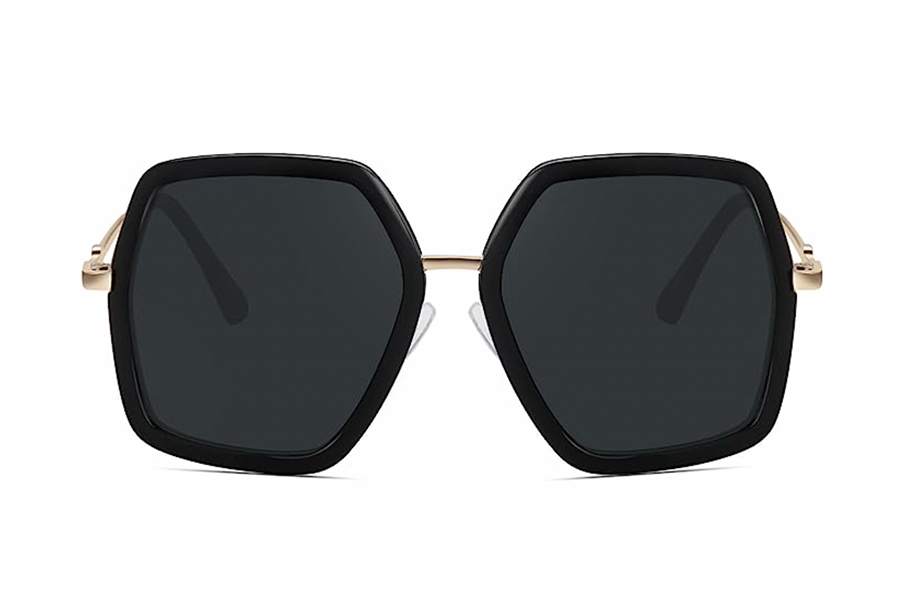
Diamond
The characteristics of this face shape include high, full cheekbones, while the forehead and chin are contrastingly narrow. For the diamond shape, rimless frames are your best friend. They will help to emphasize your full cheekbones and compliment the balance between the upper and lower portions of your face.
Household name diamonds include Madonna and Rihanna:

Sample sunglasses for a diamond-shaped face:

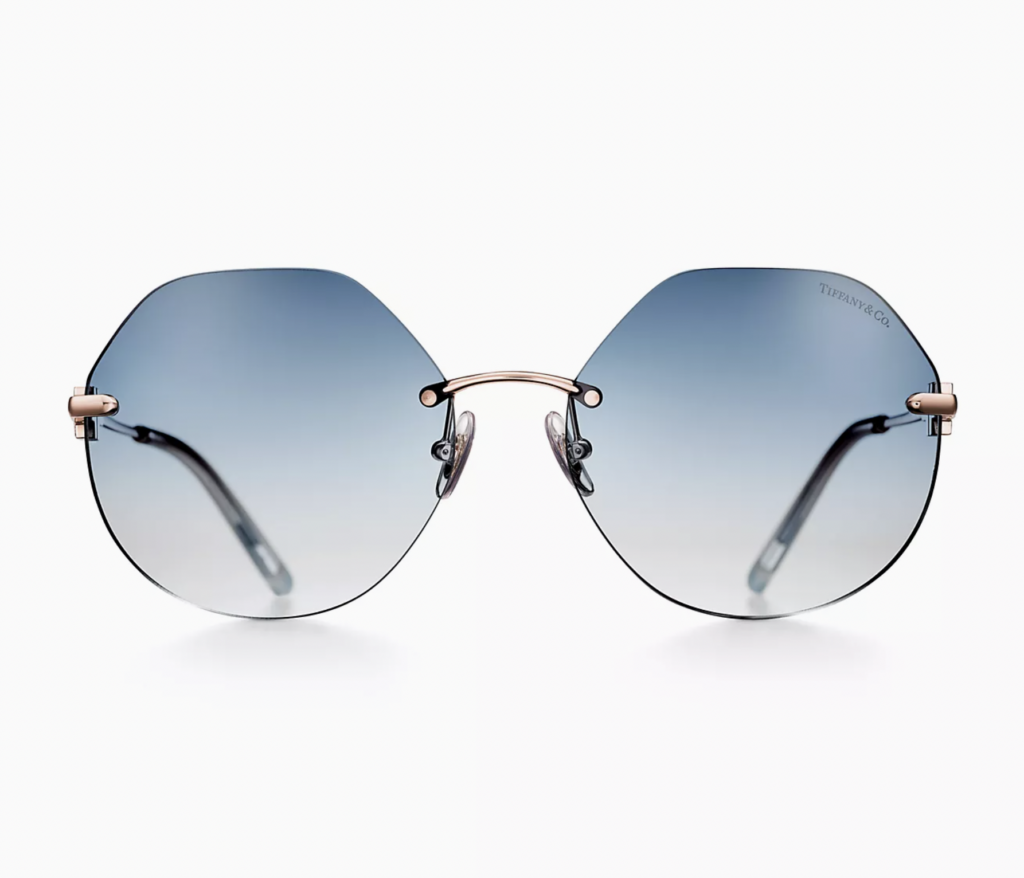
Square
Similar to the round face, a square shape is relatively as tall as it is wide. What distinguishes this shape is that it is more angular than its curved countpart. Look for features of a broad forehead and a strong jawline. Compliment your chiseled features by wearing frames with right angled sides. You can add length to your face by choosing glasses that have a slightly rounded bottom rim.
A few famous square faces include Sandra Bullock and Jessica Simpson:

Sample sunglasses for a square-shaped face:
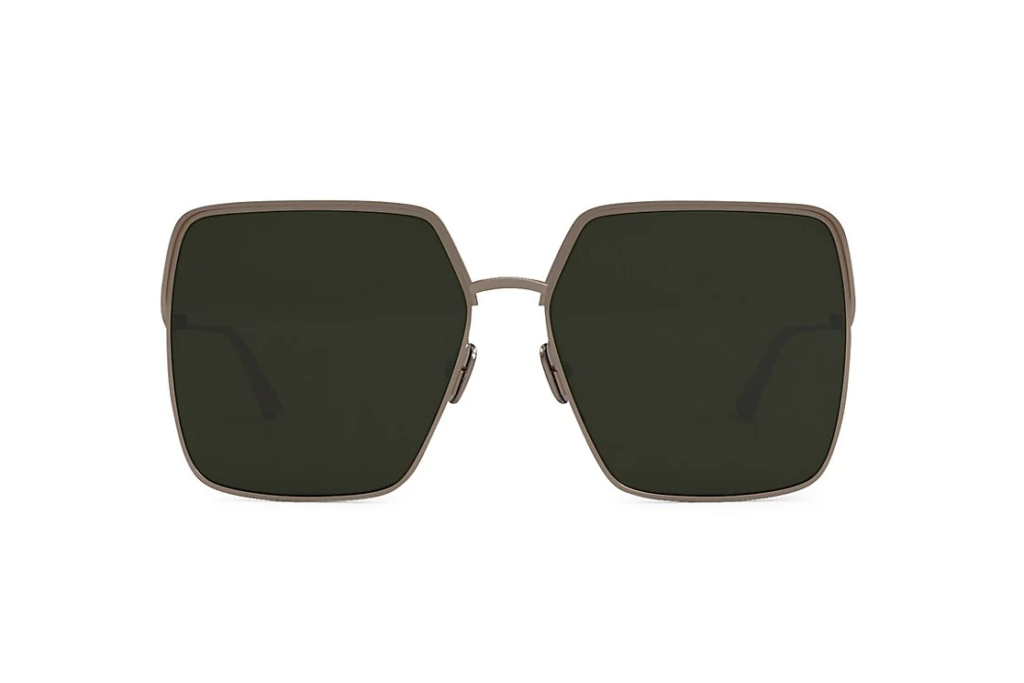

Rectangle
Like the oblong/round relationship, the rectangle shape is a vertically stretched version of a square shape. Traits of this shape include the same chiseled jawline and broad forehead, but the face is visually longer and leaner. Choose frames with a flat bottom edge if you wish to shorten the appearance of your face. Angular frames will harmonize nicely with the strong features of your face shape.
Two familiar rectangle faces are Gwyneth Paltrow and Olivia Wilde:
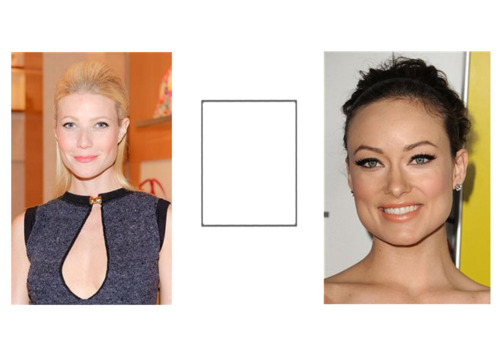
Sample sunglasses for a rectangular-shaped face:

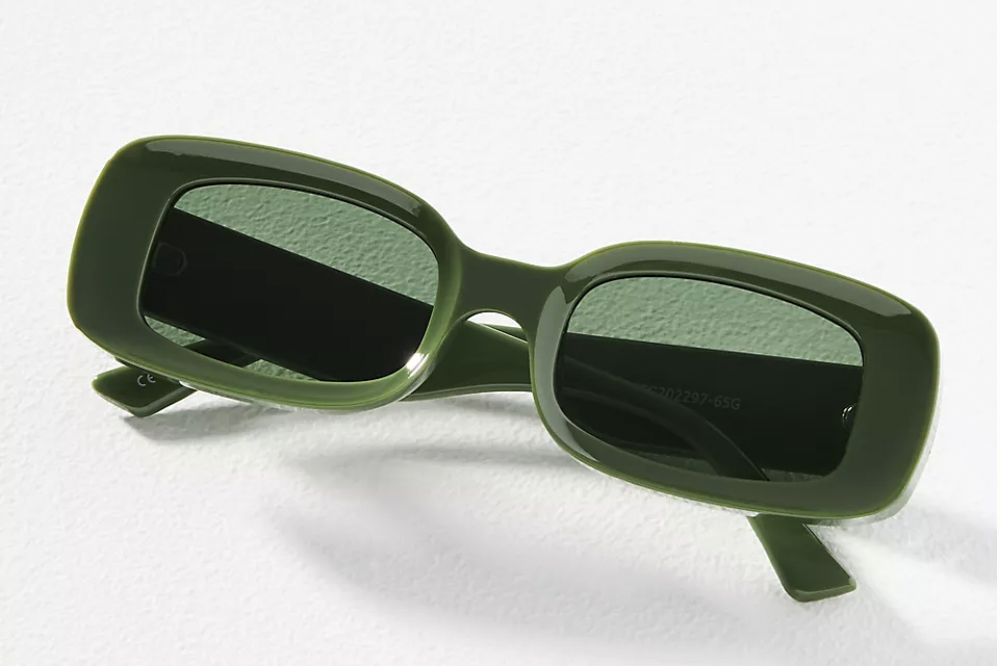
So, were you able to determine your face shape based on those key clues? Let me know in the comments! If not, don’t sweat it. This is a really difficult task and, although a fun fact to know, it’s not essential to improving your image.
Base your glasses choice on the first two steps (frame design as it relates to your facial features and personal coloring), keep your signature style top of mind, and use your judgement to see how it flatters and balances your inherent face shape. Have fun experimenting and always invest in what makes YOU feel your most confident!
Celebrity photo credits: WireImage
FEATURED ON THIS EPISODE
➤ Free 5-Min Personal Style Quiz
➤ HER Style Podcast on Instagram
leave a comment